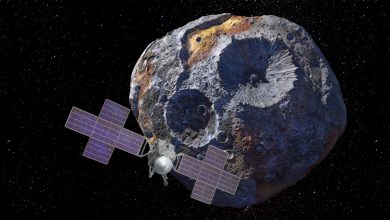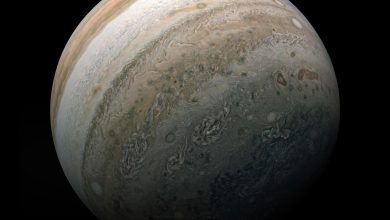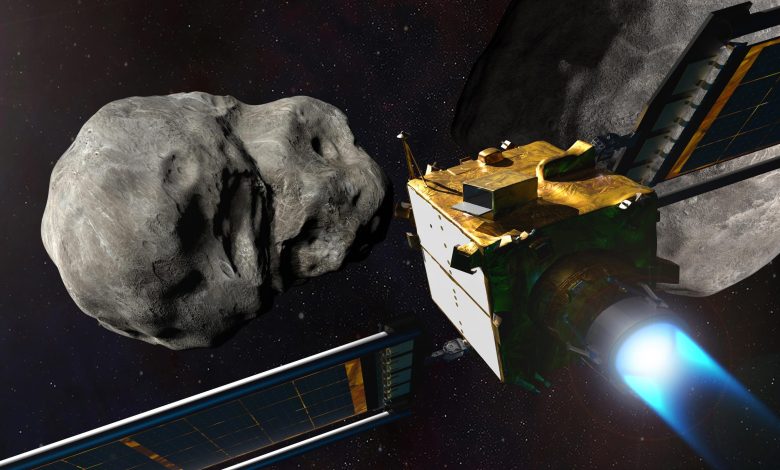
Lead Image: This illustration depicts NASA’s Double Asteroid Redirection Test (DART) spacecraft prior to impact at the Didymos binary asteroid system. Credit: NASA/Johns Hopkins APL/Steve Gribben
Trying to impact an asteroid is a bold and complex undertaking. JPL is there to assist with navigators, communications, and more.
NASA’s Double Asteroid Redirection Test (DART) mission has the challenging goal of crashing its spacecraft into a small asteroid on Monday, September 26. Its target is Dimorphos, a small moonlet orbiting a larger asteroid by the name of Didymos. Although the asteroid poses no threat to Earth, this mission will test technology that could be used to defend our planet against potential asteroid or comet hazards that may be detected in the future.
Johns Hopkins Applied Physics Laboratory (APL) in Laurel, Maryland, designed and leads the ambitious mission for NASA. However, as with many missions, the endeavor calls on expertise from various NASA centers. In the case of the agency’s Jet Propulsion Laboratory (JPL) in Pasadena, California, that expertise is for navigation, asteroid science, precise location of the target, and Earth-to-spacecraft communications.
“Strategic partnerships like ours with APL are the lifeblood of cutting-edge space mission development,” said Laurie Leshin, director of JPL. “Our history of working with APL goes all the way back to Voyager and extends well into the future, with missions like Europa Clipper. The work we do together makes us all – and our missions – better. We’re proud to support the DART mission and team.”
Launched on November 23, 2021, the roughly 1,320-pound (about 600-kilogram) DART spacecraft will be located 6.8 million miles (11 million kilometers) from Earth when it impacts Dimorphos, which measures just 525 feet (160 meters) across. Making matters more challenging still, the spacecraft will be closing in on the space rock at about 4 miles (6.1 kilometers) per second, which is about 14,000 mph (22,000 km/h). Dimorphos orbits Didymos, which is approximately half a mile (780 meters) in diameter, every 11.9 hours.
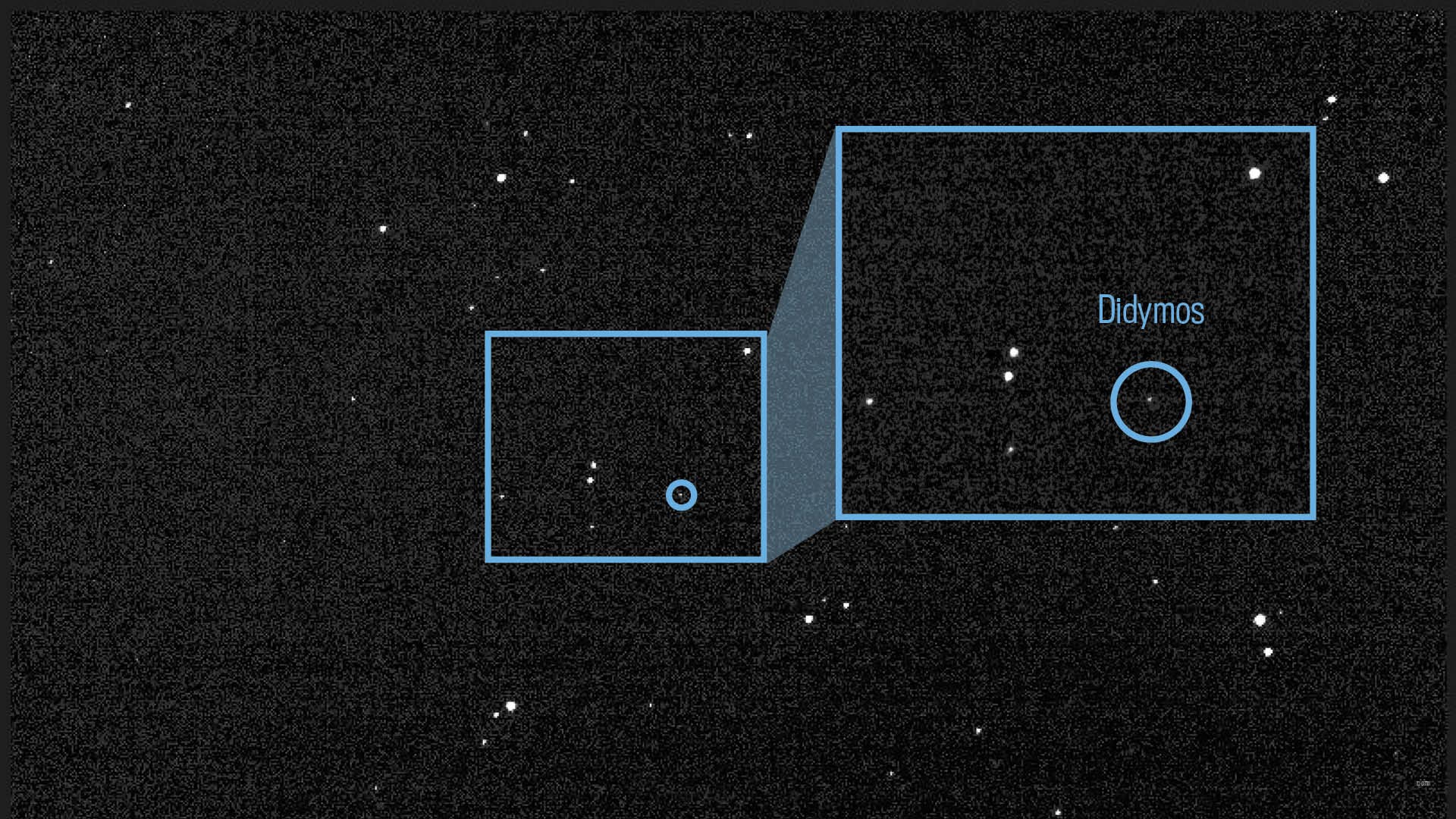
Getting to Dimorphos
JPL’s navigation section is quite experienced at getting spacecraft to faraway locations accurately (for example: Cassini to Saturn, Juno to Jupiter, Perseverance to Mars). Each mission brings its own unique set of challenges, and DART has many.
“It’s a difficult job,” said JPL’s Julie Bellerose, who leads the DART spacecraft navigation team. “A big part of what the navigation team is working on is getting DART to a 9-mile-wide (15-kilometer-wide) box in space 24 hours before impact.” At that point, Bellerose said, the mission’s final trajectory correction maneuver (the firing of thrusters to modify the direction of flight) will be executed by mission controllers back on Earth. From then on, it’s up to DART.
During the final hours of its one-way journey, DART will employ an autonomous onboard navigator created by APL to stay on course. SMART Nav, or Small-body Maneuvering Autonomous Real Time Navigation, collects and processes images of Didymos and Dimorphos from DART’s DRACO (Didymos Reconnaissance and Asteroid Camera for Optical navigation) high-resolution camera, and then uses a set of computational algorithms to determine what maneuvering needs to be done in the final four hours before impact.
Along with the DART team, another set of JPL navigators is calculating and planning the trajectory of DART’s spacecraft companion: The Italian Space Agency’s (ASI) Light Italian CubeSat for Imaging Asteroids, or LICIACube, which has the important task of imaging DART’s impact effects on Dimorphos. The toaster-size spacecraft disconnected from DART on September 11 – exactly 15 days before DART is scheduled to impact the asteroid moonlet Dimorphos – to navigate interplanetary space on its own, with an assist from the team at JPL.
“We are working with ASI to get LICIACube to within 25 to 50 miles (40 to 80 kilometers) of Dimorphos just two to three minutes after DART’s impact – close enough to get good images of the impact and ejecta plume, but not so close LICIACube could be hit by ejecta,” said JPL’s LICIACube navigation lead Dan Lubey.
While not necessary for the DART mission to succeed, the pre- and post-impact images this small satellite’s two optical cameras LEIA (LICIACube Explorer Imaging for Asteroid) and LUKE (LICIACube Unit Key Explorer) will provide could benefit the scientific community for studies of near-Earth objects and aid in the interpretation of the DART results.
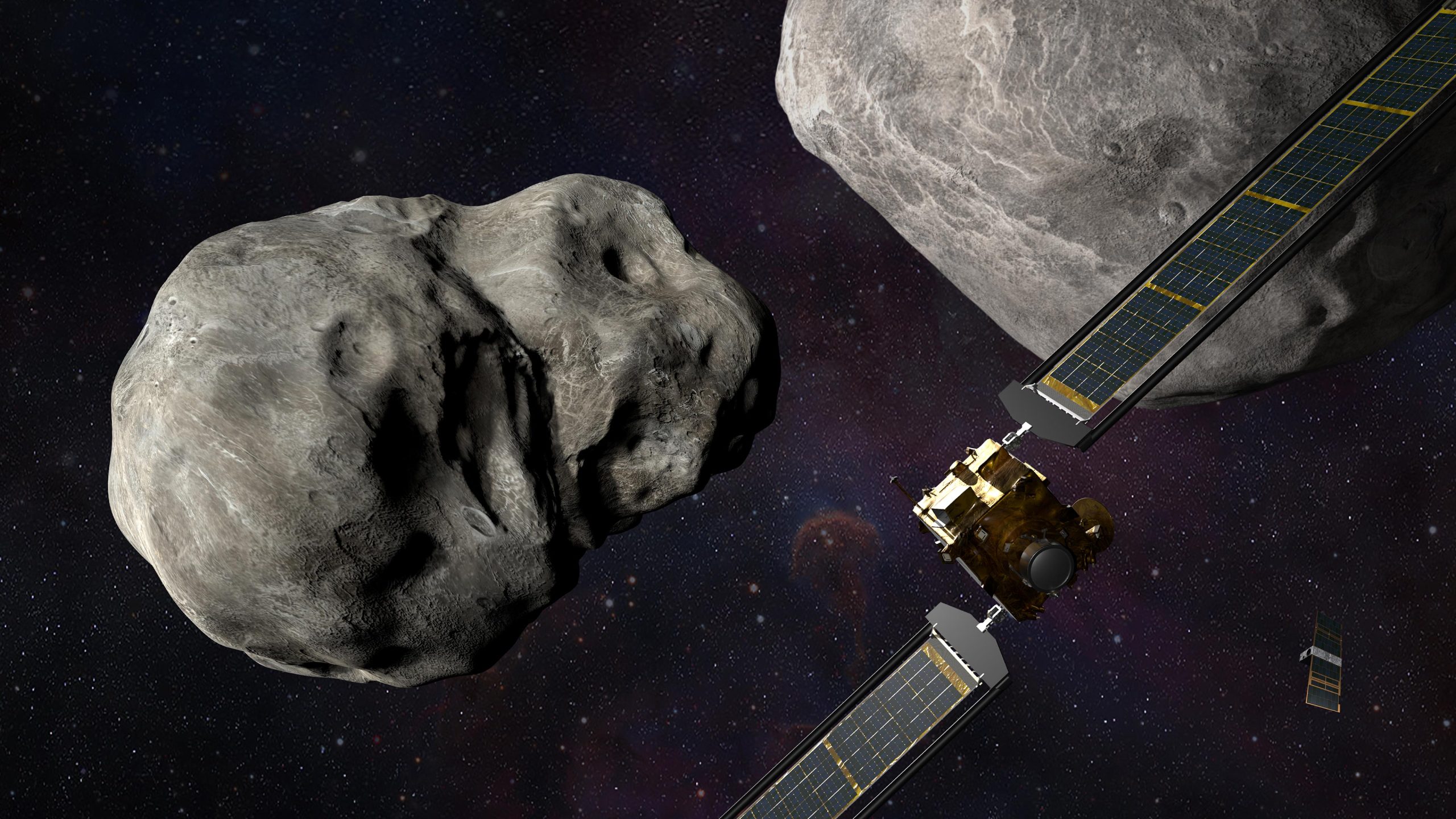
Time and Space
JPL’s Center for Near Earth Object Studies (CNEOS), an element of NASA’s Planetary Defense Coordination Office (PDCO), was tasked with determining not only the location of Didymos in space to within 16 miles (25 kilometers), but also when Dimorphos would be visible – and accessible – from DART’s direction of approach.
Along with investigators at other institutions, members of CNEOS will study the plume of rock and regolith (broken rock and dust) ejected by the impact, as well as the newly formed impact crater and the movement of Dimorphos in its orbit around its parent asteroid. Led by JPL’s Steve Chesley, they will not only examine data and imagery from DART and LICIACube, but also data from space and ground-based telescopes.
Scientists think the impact should shorten the moonlet’s orbital period around the larger asteroid by several minutes. That duration should be long enough for the effects to be observed and measured by telescopes on Earth. It should also be enough for this test to demonstrate whether kinetic impact technology – impacting an asteroid to adjust its speed and therefore its path – could in fact protect Earth from an asteroid strike.
Important contributors among those Earth-based telescopes include NASA’s Deep Space Network, the array of giant radio telescope dishes that JPL manages. With radar observations led by JPL scientist Shantanu Naidu, the massive 70-meter (230-foot) dish of Deep Space Station 14 at the network’s Goldstone complex near Barstow, California, will begin observing the aftermath of the celestial collision about 11 hours after impact, when Earth’s rotation brings Didymos and Dimorphos into view of Goldstone. Data from the echoes bounced off the two space rocks should help determine what changes occurred in the moonlet’s orbit and may even provide some coarse-resolution radar images.
Of course, radio science is only part of the Deep Space Network’s role. The navigation teams depend on it as well because the network is the means by which NASA has been communicating with spacecraft at the Moon and beyond since 1963.
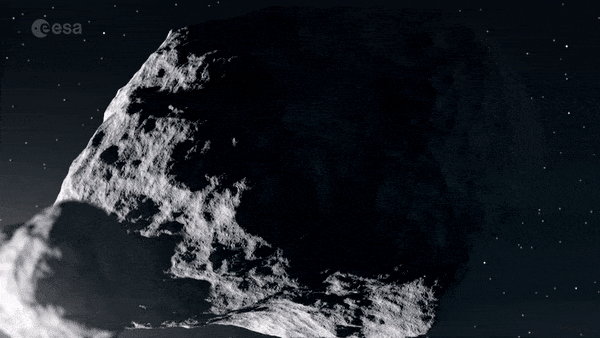
More About the Mission
Johns Hopkins Applied Physics Laboratory (APL) manages the DART mission for NASA’s Planetary Defense Coordination Office (PDCO) as a project of the agency’s Planetary Missions Program Office. DART is the world’s first planetary defense test mission and will intentionally execute a kinetic impact into Dimorphos to slightly change its motion in space. While the asteroid does not pose any threat to Earth, the DART mission will establish that a spacecraft can autonomously navigate to a kinetic impact on a relatively small asteroid thus proving this is a viable technique to deflect an asteroid on a collision course with Earth if one is ever discovered. DART will reach its target on September 26, 2022.
ASI’s LICIACube mission is operated by Argotec with independent navigation provided by JPL, the University of Bologna, and Politecnico di Milano. LICIACube rode along with DART throughout launch and cruise and then was released on September 11, 15 days before DART’s impact. LICIACube’s mission focuses on imaging the results of the DART’s impact (the crater and ejecta plume) as well as the unimpacted side of Dimorphos.

